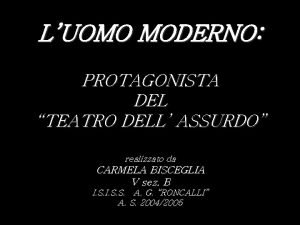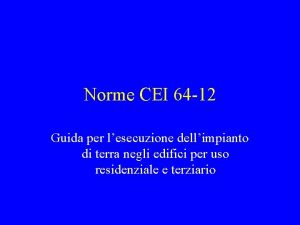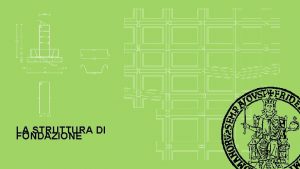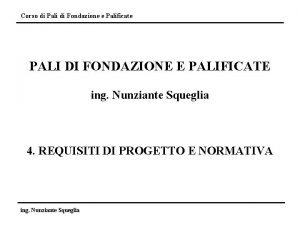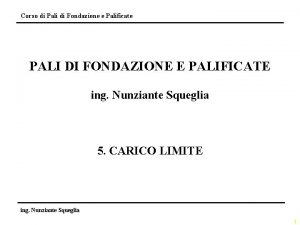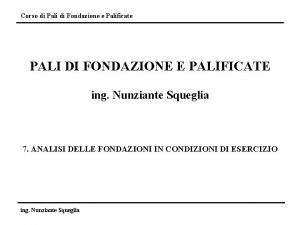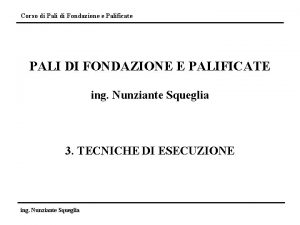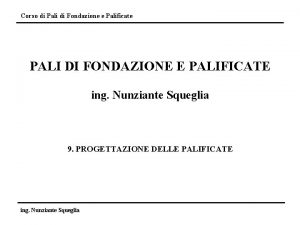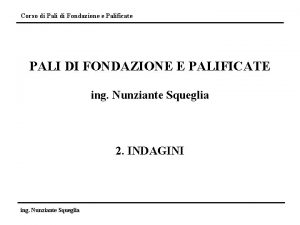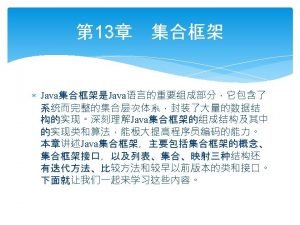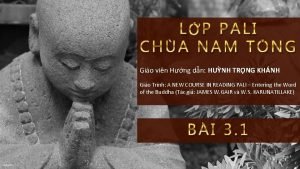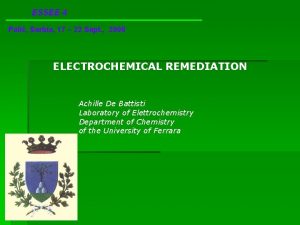The Tipitaka This is the collection of Pali



















































- Slides: 51

The Tipitaka This is the collection of Pali language texts, based on the teachings of the Buddha, which form the doctrinal foundation of Theravada Buddhism. The Tipitaka and the post-canonical Pali texts, ie. the Commentaries and Chronicles, make up the complete body of classical Theravada texts.

The Tipitaka This is the collection of Pali language texts, based on the teachings of the Buddha, which form the doctrinal foundation of Theravada Buddhism. The Tipitaka and the post-canonical Pali texts, ie. the Commentaries and Chronicles, make up the complete body of classical Theravada texts.

The Tipitaka This is the collection of Pali language texts, based on the teachings of the Buddha, which form the doctrinal foundation of Theravada Buddhism. The Tipitaka and the post-canonical Pali texts, ie. the Commentaries and Chronicles, make up the complete body of classical Theravada texts.

The Tipitaka The teachings were first compiled about 3 months after the Buddha’s passing away, during the First Buddhist Council. They were originally memorized and handed down orally, before being written down at the Aluvihara in Sri Lanka around 29 BCE.

The Tipitaka The teachings were first compiled about 3 months after the Buddha’s passing away, during the First Buddhist Council. They were originally memorized and handed down orally, before being written down at the Aluvihara in Sri Lanka around 29 BCE.

The Tipitaka Ola leaves were used to record the teachings. These are long, narrow leaves, which were sewn at the edges, then grouped into bunches and stored in baskets. Thus “Ti-pitaka” literally means “three baskets”, as it was divided into three divisions or categories.

The Tipitaka Ola leaves were used to record the teachings. These are long, narrow leaves, which were sewn at the edges, then grouped into bunches and stored in baskets. Thus “Ti-pitaka” literally means “three baskets”, as it was divided into three divisions or categories.

The Tipitaka Ola leaves were used to record the teachings. These are long, narrow leaves, which were sewn at the edges, then grouped into bunches and stored in baskets. Thus “Ti-pitaka” literally means “three baskets”, as it was divided into three divisions or categories.











The Tipitaka The Pali Canon is a vast body of literature. The English translation adds up to thousands of pages. Most (but not all) of the Canon has already been published in English over the years. It is about 11 times the size of the Christian Bible, and about two and a half times the Encyclopedia Britannica.

The Tipitaka The Pali Canon is a vast body of literature. The English translation adds up to thousands of pages. Most (but not all) of the Canon has already been published in English over the years. It is about 11 times the size of the Christian Bible, and about two and a half times the Encyclopedia Britannica.

The Tipitaka The Pali Canon is a vast body of literature. The English translation adds up to thousands of pages. Most (but not all) of the Canon has already been published in English over the years. It is about 11 times the size of the Christian Bible, and about two and a half times the Encyclopedia Britannica.


The Tipitaka Vinaya Pitaka - The rules of conduct governing the daily affairs within the Sangha, for both monks and nuns. Sutta Pitaka - The discourses attributed to the Buddha and a few of his closest disciples. Abhidhamma Pitaka - The doctrines reworked and reorganized into an investigation of mind and matter.

The Tipitaka Vinaya Pitaka - The rules of conduct governing the daily affairs within the Sangha, for both monks and nuns. Sutta Pitaka - The discourses attributed to the Buddha and a few of his closest disciples. Abhidhamma Pitaka - The doctrines reworked and reorganized into an investigation of mind and matter.

The Tipitaka Vinaya Pitaka - The rules of conduct governing the daily affairs within the Sangha, for both monks and nuns. Sutta Pitaka - The discourses attributed to the Buddha and a few of his closest disciples. Abhidhamma Pitaka - The doctrines reworked and reorganized into an investigation of mind and matter.

The Vinaya Pitaka This division, made up of 5 books, is mostly concerned with the rules of the Sangha. The rules are preceded by stories and explanations telling how the Buddha came to lay them down. These rules were devised whenever the Buddha encountered various problems or disputes concerning the Sangha.

The Vinaya Pitaka This division, made up of 5 books, is mostly concerned with the rules of the Sangha. The rules are preceded by stories and explanations telling how the Buddha came to lay them down. These rules were devised whenever the Buddha encountered various problems or disputes concerning the Sangha.

The Vinaya Pitaka 1. 2. 3. 4. 5. Parajika Pali (Major Offences) : The rules of discipline concerning 49 major and minor offences and the penalties. Pacittiya Pali (Minor Offences) : Deals with the remaining 178 sets of rules for the Bhikkhus and Bhikkhunis. Mahavagga Pali (Greater Section) : This contains an account of the period following the Buddha's Awakening, his sermons to the first five monks, and how some of his great disciples joined the Sangha and attained Awakening. Also rules of conduct and etiquette for the Sangha. Culavagga Pali (Lesser Section) : More rules and procedures for institutional acts or functions. Parivara Pali ( Epitome of the Vinaya ) : Summaries and explanations of the rules for instructional purposes.

The Vinaya Pitaka 1. 2. 3. 4. 5. Parajika Pali (Major Offences) : The rules of discipline concerning 49 major and minor offences and the penalties. Pacittiya Pali (Minor Offences) : Deals with the remaining 178 sets of rules for the Bhikkhus and Bhikkhunis. Mahavagga Pali (Greater Section) : This contains an account of the period following the Buddha's Awakening, his sermons to the first five monks, and how some of his great disciples joined the Sangha and attained Awakening. Also rules of conduct and etiquette for the Sangha. Culavagga Pali (Lesser Section) : More rules and procedures for institutional acts or functions. Parivara Pali ( Epitome of the Vinaya ) : Summaries and explanations of the rules for instructional purposes.

The Vinaya Pitaka 1. 2. 3. 4. 5. Parajika Pali (Major Offences) : The rules of discipline concerning 49 major and minor offences and the penalties. Pacittiya Pali (Minor Offences) : Deals with the remaining 178 sets of rules for the Bhikkhus and Bhikkhunis. Mahavagga Pali (Greater Section) : This contains an account of the period following the Buddha's Awakening, his sermons to the first five monks, and how some of his great disciples joined the Sangha and attained Awakening. Also rules of conduct and etiquette for the Sangha. Culavagga Pali (Lesser Section) : More rules and procedures for institutional acts or functions. Parivara Pali ( Epitome of the Vinaya ) : Summaries and explanations of the rules for instructional purposes.

The Vinaya Pitaka 1. 2. 3. 4. 5. Parajika Pali (Major Offences) : The rules of discipline concerning 49 major and minor offences and the penalties. Pacittiya Pali (Minor Offences) : Deals with the remaining 178 sets of rules for the Bhikkhus and Bhikkhunis. Mahavagga Pali (Greater Section) : This contains an account of the period following the Buddha's Awakening, his sermons to the first five monks, and how some of his great disciples joined the Sangha and attained Awakening. Also rules of conduct and etiquette for the Sangha. Culavagga Pali (Lesser Section) : More rules and procedures for institutional acts or functions. Parivara Pali ( Epitome of the Vinaya ) : Summaries and explanations of the rules for instructional purposes.

The Vinaya Pitaka 1. 2. 3. 4. 5. Parajika Pali (Major Offences) : The rules of discipline concerning 49 major and minor offences and the penalties. Pacittiya Pali (Minor Offences) : Deals with the remaining 178 sets of rules for the Bhikkhus and Bhikkhunis. Mahavagga Pali (Greater Section) : This contains an account of the period following the Buddha's Awakening, his sermons to the first five monks, and how some of his great disciples joined the Sangha and attained Awakening. Also rules of conduct and etiquette for the Sangha. Culavagga Pali (Lesser Section) : More rules and procedures for institutional acts or functions. Parivara Pali ( Epitome of the Vinaya ) : Summaries and explanations of the rules for instructional purposes.

The Sutta Pitaka This consists of five collections, or Nikayas, that contain discourses attributed to the Buddha as spoken on various occasions. There also a few discourses delivered by some of his better known disciples such as Sariputta, Ananda, and Moggallana in it.

The Sutta Pitaka This consists of five collections, or Nikayas, that contain discourses attributed to the Buddha as spoken on various occasions. There also a few discourses delivered by some of his better known disciples such as Sariputta, Ananda, and Moggallana in it.

The Sutta Pitaka Most of the teachings were intended for the Sangha but there are many discourses which deal with both the material and moral progress of the laity. The Buddha successfully adapted the manner and style of his discourses such that he used simpler concepts for the ordinary folk, and more complex ideas for educated and intellectual audiences.

The Sutta Pitaka Most of the teachings were intended for the Sangha but there are many discourses which deal with both the material and moral progress of the laity. The Buddha successfully adapted the manner and style of his discourses such that he used simpler concepts for the ordinary folk, and more complex ideas for educated and intellectual audiences.

The Sutta Pitaka 1. 2. 3. 4. 5. The Digha Nikaya (Collection of Long Discourses) : Contains 34 suttas, some very lengthy, presenting a vivid picture of the different aspects of life and thought at the Buddha's time. The Majjhima Nikaya (Collection of the Middle Length Sayings) : Contains 152 suttas and present the teachings with profound similes and examples. The Samyutta Nikaya (Collection of Kindred Discourses) : This has 2, 941 suttas, grouped into five parts, or vaggas. The Anguttara Nikaya (Collection of the Gradual Sayings) : Contains as many as 2, 308 small suttas arranged according to the number of topics discussed, from one to eleven. The Khuddaka Nikaya (Collection of Small Texts) : Subdivided into fifteen books which includes the Dhammapada, Sutta Nipata and Jataka stories.

The Sutta Pitaka 1. 2. 3. 4. 5. The Digha Nikaya (Collection of Long Discourses) : Contains 34 suttas, some very lengthy, presenting a vivid picture of the different aspects of life and thought at the Buddha's time. The Majjhima Nikaya (Collection of the Middle Length Sayings) : Contains 152 suttas and present the teachings with profound similes and examples. The Samyutta Nikaya (Collection of Kindred Discourses) : This has 2, 941 suttas, grouped into five parts, or vaggas. The Anguttara Nikaya (Collection of the Gradual Sayings) : Contains as many as 2, 308 small suttas arranged according to the number of topics discussed, from one to eleven. The Khuddaka Nikaya (Collection of Small Texts) : Subdivided into fifteen books which includes the Dhammapada, Sutta Nipata and Jataka stories.

The Sutta Pitaka 1. 2. 3. 4. 5. The Digha Nikaya (Collection of Long Discourses) : Contains 34 suttas, some very lengthy, presenting a vivid picture of the different aspects of life and thought at the Buddha's time. The Majjhima Nikaya (Collection of the Middle Length Sayings) : Contains 152 suttas and present the teachings with profound similes and examples. The Samyutta Nikaya (Collection of Kindred Discourses) : This has 2, 941 suttas, grouped into five parts, or vaggas. The Anguttara Nikaya (Collection of the Gradual Sayings) : Contains as many as 2, 308 small suttas arranged according to the number of topics discussed, from one to eleven. The Khuddaka Nikaya (Collection of Small Texts) : Subdivided into fifteen books which includes the Dhammapada, Sutta Nipata and Jataka stories.

The Sutta Pitaka 1. 2. 3. 4. 5. The Digha Nikaya (Collection of Long Discourses) : Contains 34 suttas, some very lengthy, presenting a vivid picture of the different aspects of life and thought at the Buddha's time. The Majjhima Nikaya (Collection of the Middle Length Sayings) : Contains 152 suttas and present the teachings with profound similes and examples. The Samyutta Nikaya (Collection of Kindred Discourses) : This has 2, 941 suttas, grouped into five parts, or vaggas. The Anguttara Nikaya (Collection of the Gradual Sayings) : Contains as many as 2, 308 small suttas arranged according to the number of topics discussed, from one to eleven. The Khuddaka Nikaya (Collection of Small Texts) : Subdivided into fifteen books which includes the Dhammapada, Sutta Nipata and Jataka stories.

The Sutta Pitaka 1. 2. 3. 4. 5. The Digha Nikaya (Collection of Long Discourses) : Contains 34 suttas, some very lengthy, presenting a vivid picture of the different aspects of life and thought at the Buddha's time. The Majjhima Nikaya (Collection of the Middle Length Sayings) : Contains 152 suttas and present the teachings with profound similes and examples. The Samyutta Nikaya (Collection of Kindred Discourses) : This has 2, 941 suttas, grouped into five parts, or vaggas. The Anguttara Nikaya (Collection of the Gradual Sayings) : Contains as many as 2, 308 small suttas arranged according to the number of topics discussed, from one to eleven. The Khuddaka Nikaya (Collection of Small Texts) : Subdivided into fifteen books which includes the Dhammapada, Sutta Nipata and Jataka stories.

The Abhidhamma Pitaka It comprises seven works based on the Buddha's discourses presented in terms of “Ultimate Realities” as opposed to “Conventional Realities” defining states of mind and matter that are systematically arranged and tabulated. The Pali version of the Abhidhamma is a strictly Theravada collection and is usually not recognized by other Buddhist schools.

The Abhidhamma Pitaka It comprises seven works based on the Buddha's discourses presented in terms of “Ultimate Realities” as opposed to “Conventional Realities” defining states of mind and matter that are systematically arranged and tabulated. The Pali version of the Abhidhamma is a strictly Theravada collection and is usually not recognized by other Buddhist schools.

The Abhidhamma Pitaka 1. 2. 3. 4. 5. 6. 7. Dhammasangani (Enumeration of Phenomena) : Enumerates all the Paramattha Dhammas (Ultimate Realities). Vibhanga (Book of Treatises) : Analysis of 18 topics by various methods, including those of the Dhammasangani. Dhatukatha (Reference to the Elements) : A reiteration of the foregoing, in the form of questions and answers. Puggalapannatti (Description of Individuals) : Explanations of types of person, arranged numerically. Kathavatthu (Points of Controversy) : Compiled by Moggaliputta Tissa during the Third Council, clarifying points of controversy and rebutting heretical teachings. Yamaka (The Book of Pairs) : A logical analysis of many concepts presented in the earlier books, arranged in pairs. Patthana (The Book of Relations) : Describes the 24 paccayas, or laws of causal relationships.

The Abhidhamma Pitaka 1. 2. 3. 4. 5. 6. 7. Dhammasangani (Enumeration of Phenomena) : Enumerates all the Paramattha Dhammas (Ultimate Realities). Vibhanga (Book of Treatises) : Analysis of 18 topics by various methods, including those of the Dhammasangani. Dhatukatha (Reference to the Elements) : A reiteration of the foregoing, in the form of questions and answers. Puggalapannatti (Description of Individuals) : Explanations of types of person, arranged numerically. Kathavatthu (Points of Controversy) : Compiled by Moggaliputta Tissa during the Third Council, clarifying points of controversy and rebutting heretical teachings. Yamaka (The Book of Pairs) : A logical analysis of many concepts presented in the earlier books, arranged in pairs. Patthana (The Book of Relations) : Describes the 24 paccayas, or laws of causal relationships.

The Abhidhamma Pitaka 1. 2. 3. 4. 5. 6. 7. Dhammasangani (Enumeration of Phenomena) : Enumerates all the Paramattha Dhammas (Ultimate Realities). Vibhanga (Book of Treatises) : Analysis of 18 topics by various methods, including those of the Dhammasangani. Dhatukatha (Reference to the Elements) : A reiteration of the foregoing, in the form of questions and answers. Puggalapannatti (Description of Individuals) : Explanations of types of person, arranged numerically. Kathavatthu (Points of Controversy) : Compiled by Moggaliputta Tissa during the Third Council, clarifying points of controversy and rebutting heretical teachings. Yamaka (The Book of Pairs) : A logical analysis of many concepts presented in the earlier books, arranged in pairs. Patthana (The Book of Relations) : Describes the 24 paccayas, or laws of causal relationships.

The Abhidhamma Pitaka 1. 2. 3. 4. 5. 6. 7. Dhammasangani (Enumeration of Phenomena) : Enumerates all the Paramattha Dhammas (Ultimate Realities). Vibhanga (Book of Treatises) : Analysis of 18 topics by various methods, including those of the Dhammasangani. Dhatukatha (Reference to the Elements) : A reiteration of the foregoing, in the form of questions and answers. Puggalapannatti (Description of Individuals) : Explanations of types of person, arranged numerically. Kathavatthu (Points of Controversy) : Compiled by Moggaliputta Tissa during the Third Council, clarifying points of controversy and rebutting heretical teachings. Yamaka (The Book of Pairs) : A logical analysis of many concepts presented in the earlier books, arranged in pairs. Patthana (The Book of Relations) : Describes the 24 paccayas, or laws of causal relationships.

The Abhidhamma Pitaka 1. 2. 3. 4. 5. 6. 7. Dhammasangani (Enumeration of Phenomena) : Enumerates all the Paramattha Dhammas (Ultimate Realities). Vibhanga (Book of Treatises) : Analysis of 18 topics by various methods, including those of the Dhammasangani. Dhatukatha (Reference to the Elements) : A reiteration of the foregoing, in the form of questions and answers. Puggalapannatti (Description of Individuals) : Explanations of types of person, arranged numerically. Kathavatthu (Points of Controversy) : Compiled by Moggaliputta Tissa during the Third Council, clarifying points of controversy and rebutting heretical teachings. Yamaka (The Book of Pairs) : A logical analysis of many concepts presented in the earlier books, arranged in pairs. Patthana (The Book of Relations) : Describes the 24 paccayas, or laws of causal relationships.

The Abhidhamma Pitaka 1. 2. 3. 4. 5. 6. 7. Dhammasangani (Enumeration of Phenomena) : Enumerates all the Paramattha Dhammas (Ultimate Realities). Vibhanga (Book of Treatises) : Analysis of 18 topics by various methods, including those of the Dhammasangani. Dhatukatha (Reference to the Elements) : A reiteration of the foregoing, in the form of questions and answers. Puggalapannatti (Description of Individuals) : Explanations of types of person, arranged numerically. Kathavatthu (Points of Controversy) : Compiled by Moggaliputta Tissa during the Third Council, clarifying points of controversy and rebutting heretical teachings. Yamaka (The Book of Pairs) : A logical analysis of many concepts presented in the earlier books, arranged in pairs. Patthana (The Book of Relations) : Describes the 24 paccayas, or laws of causal relationships.

The Abhidhamma Pitaka 1. 2. 3. 4. 5. 6. 7. Dhammasangani (Enumeration of Phenomena) : Enumerates all the Paramattha Dhammas (Ultimate Realities). Vibhanga (Book of Treatises) : Analysis of 18 topics by various methods, including those of the Dhammasangani. Dhatukatha (Reference to the Elements) : A reiteration of the foregoing, in the form of questions and answers. Puggalapannatti (Description of Individuals) : Explanations of types of person, arranged numerically. Kathavatthu (Points of Controversy) : Compiled by Moggaliputta Tissa during the Third Council, clarifying points of controversy and rebutting heretical teachings. Yamaka (The Book of Pairs) : A logical analysis of many concepts presented in the earlier books, arranged in pairs. Patthana (The Book of Relations) : Describes the 24 paccayas, or laws of causal relationships.

Prepared by T Y Lee www. justbegood. net
 Alfabeto pali
Alfabeto pali Pali blu di pollock
Pali blu di pollock Parajika pali
Parajika pali Ngữ pháp pali
Ngữ pháp pali 64/12
64/12 Dr pali jeno
Dr pali jeno Fondazioni continue a platea
Fondazioni continue a platea Pali ho dobre bydlo
Pali ho dobre bydlo Pali radice
Pali radice Landsat collection 1 vs collection 2
Landsat collection 1 vs collection 2 Sightd
Sightd Cái miệng nó xinh thế chỉ nói điều hay thôi
Cái miệng nó xinh thế chỉ nói điều hay thôi Thơ thất ngôn tứ tuyệt đường luật
Thơ thất ngôn tứ tuyệt đường luật Các châu lục và đại dương trên thế giới
Các châu lục và đại dương trên thế giới Từ ngữ thể hiện lòng nhân hậu
Từ ngữ thể hiện lòng nhân hậu Diễn thế sinh thái là
Diễn thế sinh thái là Ng-html
Ng-html Ví dụ về giọng cùng tên
Ví dụ về giọng cùng tên Phép trừ bù
Phép trừ bù Chúa yêu trần thế alleluia
Chúa yêu trần thế alleluia Khi nào hổ mẹ dạy hổ con săn mồi
Khi nào hổ mẹ dạy hổ con săn mồi đại từ thay thế
đại từ thay thế Vẽ hình chiếu vuông góc của vật thể sau
Vẽ hình chiếu vuông góc của vật thể sau Quá trình desamine hóa có thể tạo ra
Quá trình desamine hóa có thể tạo ra Công thức tính độ biến thiên đông lượng
Công thức tính độ biến thiên đông lượng Thế nào là mạng điện lắp đặt kiểu nổi
Thế nào là mạng điện lắp đặt kiểu nổi Lời thề hippocrates
Lời thề hippocrates Dot
Dot Bổ thể
Bổ thể Vẽ hình chiếu đứng bằng cạnh của vật thể
Vẽ hình chiếu đứng bằng cạnh của vật thể độ dài liên kết
độ dài liên kết Các môn thể thao bắt đầu bằng từ đua
Các môn thể thao bắt đầu bằng từ đua Khi nào hổ mẹ dạy hổ con săn mồi
Khi nào hổ mẹ dạy hổ con săn mồi điện thế nghỉ
điện thế nghỉ Thế nào là sự mỏi cơ
Thế nào là sự mỏi cơ Một số thể thơ truyền thống
Một số thể thơ truyền thống Trời xanh đây là của chúng ta thể thơ
Trời xanh đây là của chúng ta thể thơ Chó sói
Chó sói Thiếu nhi thế giới liên hoan
Thiếu nhi thế giới liên hoan Bảng số nguyên tố
Bảng số nguyên tố Tỉ lệ cơ thể trẻ em
Tỉ lệ cơ thể trẻ em Tia chieu sa te
Tia chieu sa te Các châu lục và đại dương trên thế giới
Các châu lục và đại dương trên thế giới Thế nào là hệ số cao nhất
Thế nào là hệ số cao nhất Sơ đồ cơ thể người
Sơ đồ cơ thể người Tư thế ngồi viết
Tư thế ngồi viết Hình ảnh bộ gõ cơ thể búng tay
Hình ảnh bộ gõ cơ thể búng tay đặc điểm cơ thể của người tối cổ
đặc điểm cơ thể của người tối cổ Mật thư tọa độ 5x5
Mật thư tọa độ 5x5 Chụp phim tư thế worms-breton
Chụp phim tư thế worms-breton Tư thế ngồi viết
Tư thế ngồi viết ưu thế lai là gì
ưu thế lai là gì

